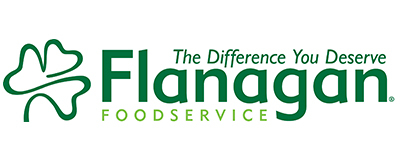
We collect basic website visitor information on this website and store it in cookies. We also utilize Google Analytics to track page view information to assist us in improving our website.

Centre-of-plate proteins are some of the most expensive ingredients. Implementing strategies to lower food costs without sacrificing quality and presentation can help your bottom line while feeding creativity and inspiration in the kitchen. Selecting less expensive cuts, marinating with creative sauces, creating soups and stews, and choosing sides that complement well while providing exceptional value are just some of the ways to tame the food cost beast.
Rather than deciding what proteins to use based solely on food cost percentage, consider contribution to margin by subtracting food cost from your selling price. “By working from a contribution to margin calculation, operators can more clearly see how customers might choose one item over another if the value isn’t strong enough on price point,” says James Keppy, national culinary chef, Maple Leaf Foods. “It also illustrates how paying attention to pricing can make the difference between making a sale or not, and to your overall sales and profit margin.”
“Do you go to a lower grade or a smaller portion?” Keppy asks. “Does it have to be a 10-ounce steak or could it be an eight-ounce? If you go to a smaller cut, then you can add protein with chick peas and lentil options. And by keeping your sides flexible, you add ability to respond to food cost pressures.”
No surprise, fresh product is time-limited. Frozen cases offer more flexibility since you can take out as many bags as you need without fearing that the rest will spoil. This flexibility enables you to plan ahead, forward buy, and more accurately assess your needs.
Remember that markets dictate price, and by understanding the fluctuations, operators can gain maximum pricing advantage. Supply and demand pushes steak prices up during grilling season; hips and chucks begin to rise in August based on future bookings for delivery in October.
According to meat experts, a well-aged AA program will produce higher value steak than a lesser-aged AAA program. A quality product depends on proper aging, but if you age AA and AAA beef in the same ways, the AAA will offer a consistent, flavourful and juicy product.
Working with chicken? Test for yield.
Do your due diligence and carry out a proper yield test on your raw chicken breast to see cooking loss against a competitor, Keppy recommends. “The loss can be significant if you are buying an inexpensive frozen chicken breast. Protein is reduced by the amount of water that is added and that water is purged out leaving a smaller cooked product.”
“It is the sign of a good cook who can prepare tougher cuts.”
James Keppy, national culinary chef, Maple Leaf Foods
Offering a skirt steak or top sirloin in place of tenderloin, or a chicken thigh instead of chicken breast can make a great meal with even more flavour, Keppy says. “It is the sign of a good cook who can prepare tougher cuts. Depending on your operation, a value-added product may be the best answer because of the staff savings, portioning and hold times that can balance off a raw product with labour, cook time and waste.”
Canadian meats are among the best in the world. By proclaiming place of origin on menus, operators can build pride and customer loyalty.
TIP: Build a feature menu item. Try offering a mix grill with three smaller servings of protein like a three-ounce chicken breast, a small dinner sausage, and three-ounce piece of steak.
TIP: Work your seasonings. A cheaper cut marinated and seasoned properly can show off your talents as much as a top cut.
Visit chefconnexion.com for more great articles
Written by Lawrence Herzog
A writer, photographer and broadcaster for 30+ years, Lawrence Herzog is an experienced and accomplished communications professional with a specialty in foodservice and tourism. He was editor of Flavours magazine and contributing editor of Your Foodservice Manager magazine.

